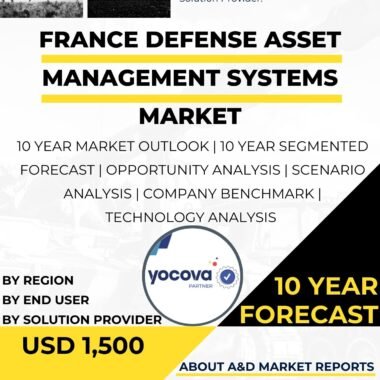Description
Defense asset management systems play a crucial role in Canada’s military operations by ensuring the efficient and effective utilization of defense assets, including equipment, vehicles, facilities, and infrastructure. These systems help the Canadian Armed Forces (CAF) optimize resource allocation, track asset performance, plan maintenance schedules, and make informed decisions to enhance operational readiness and maintain a strong defense posture.
The Canadian defense sector relies on modern and sophisticated asset management systems to overcome challenges posed by the vast and diverse geography of the country, the wide array of defense assets, and the need for constant readiness to respond to potential threats.
At the core of Canada’s defense asset management systems are advanced software solutions that provide comprehensive asset tracking and management capabilities. These systems use cutting-edge technologies such as Geographic Information Systems (GIS), Internet of Things (IoT), and Artificial Intelligence (AI) to gather and process data from various assets in real-time.
One critical aspect of defense asset management is inventory control. Canada’s defense asset management systems keep meticulous records of the entire inventory, from weapons and vehicles to spare parts and personal equipment. Each asset is assigned a unique identifier, enabling accurate tracking and identification throughout its lifecycle. The data collected is used to make informed decisions regarding asset maintenance, upgrades, and replacements.
To ensure the efficient use of defense assets, the asset management systems incorporate scheduling and planning modules. Maintenance schedules are meticulously organized to minimize downtime and maximize operational readiness. Preventive maintenance measures are prioritized to avoid unexpected breakdowns and keep assets in peak condition.
The integration of Geographic Information Systems (GIS) is instrumental in managing Canada’s vast territorial expanse. GIS technology enables the visualization and analysis of geospatial data, aiding in asset deployment and resource allocation. For example, during disaster response operations or military exercises, GIS helps in identifying the most strategic locations to position assets for optimal efficiency.
Real-time monitoring of asset performance is a critical feature of defense asset management systems. IoT sensors are strategically installed on assets, such as aircraft, vehicles, and ships, to collect data on various parameters like engine performance, fuel consumption, and structural health. This data is transmitted to central databases, allowing maintenance teams to monitor asset health and identify potential issues proactively.
The integration of Artificial Intelligence (AI) into defense asset management systems brings a new level of efficiency and predictive capability. AI algorithms analyze the vast amounts of data collected by IoT sensors and other sources, enabling predictive maintenance and decision-making. AI can detect patterns indicative of potential failures, enabling maintenance teams to address problems before they escalate, thus reducing downtime and maintenance costs.
Asset lifecycle management is a critical aspect of defense asset management systems. From procurement to retirement, every asset undergoes a well-structured lifecycle. The systems track each asset’s usage, maintenance history, and upgrade requirements throughout its operational life. This information is valuable for budgeting purposes, allowing the military to plan for future acquisitions and allocate resources wisely.
Interoperability and data sharing are essential components of effective defense asset management systems. Different branches of the CAF and other government agencies need access to asset information to coordinate operations efficiently. Therefore, these systems are designed to ensure secure data exchange and compatibility between various military databases and platforms.
Cybersecurity is a paramount concern in defense asset management systems. As these systems handle sensitive information and control critical military assets, they are prime targets for cyberattacks. Robust cybersecurity measures are implemented to safeguard the integrity and confidentiality of data, protecting the nation’s defense capabilities from potential threats.
The Canadian defense asset management systems also facilitate integration with external partners and allies. In multinational operations or joint exercises, asset information needs to be shared seamlessly with allied forces. Through standardized data formats and secure communication channels, these systems foster effective collaboration and interoperability with allied militaries.
To ensure that defense asset management systems remain up-to-date and meet evolving requirements, continuous research and development are carried out. The Canadian government invests in modernizing and enhancing these systems, incorporating the latest technologies and methodologies to stay at the forefront of asset management practices.
In conclusion, defense asset management systems are critical components of Canada’s military infrastructure. These systems utilize advanced software solutions, IoT, AI, and GIS technologies to ensure the efficient utilization, maintenance, and planning of defense assets. The ability to track and monitor assets in real-time, coupled with predictive maintenance capabilities, enhances operational readiness and cost-effectiveness. Cybersecurity measures are paramount to protect sensitive asset data, while interoperability enables effective collaboration with allied forces. Continuous research and development efforts ensure that Canada’s defense asset management systems remain robust and adaptive to meet the challenges of an ever-changing security landscape.




